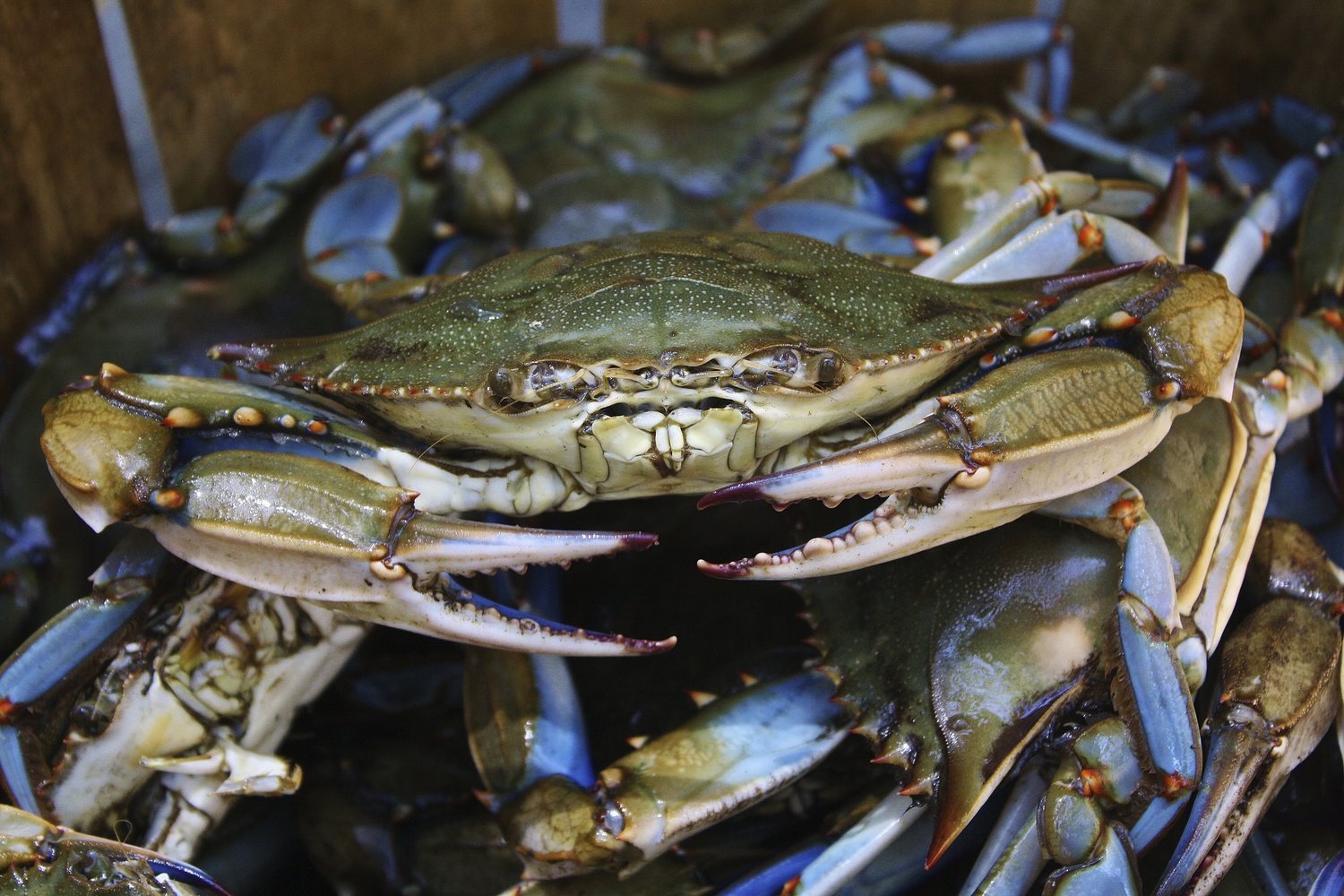One of the best foods is also free for the taking if you know how to to go crabbing!
Are you looking for a fun, family-friendly activity? Head out to the water and try your hand at harvesting your own dinner! If you like blue crabs, you'll be amazed at how easy it is to catch them.
Here are some easy methods for a beginner that will have you up and running in no time. On the Chesapeake Bay, crab season is from April 1 to December 15, so take advantage while you can!
The Gear
At its simplest form, going crabbing can be as easy as tying a chicken neck to a piece of heavy yarn or twine and pulling it up when you feel a tug. That's it! This basic hand line is a favorite with kids, but a few things will make it even easier.
A handled net will enable you to scoop up your crab when it's within arm's reach. A covered bucket is good (fill it up with water before you walk out onto the pier), but a cooler with ice is even better. Having one with wheels and a drain spout will make your trip home a breeze.
If you want to try something a little more complex, get a collapsible wire trap or crab basket. This will let you catch multiple crabs at once and is still considered a hand line because you're pulling it up manually.

Courtesy of Travel Oregon
Location Is Everything
Crabbing from a fishing pier or off the side of a dock is ideal for a beginner. Once you've got a crab interested in your bait, it will hang on as long as you're slowly pulling upwards. Weird, right? Look around for a bayside park or someone who has a dock that extends into brackish water. You don't have to go too far out—leave the deeper water for the fishermen!
When you're scoping out good spots, check your local state parks on the water and see if they have a fishing pier. You can also ask the fishermen if they know if any other good crabbing locations. Everyone has one or two up their sleeve.
Know Your Keepers
Have a ruler or caliper on hand to make sure each crab is at least 5.25 inches long from point to point along the carapce. The officers of the Maryland Department of Natural Resources may do spot checks of recreational catches. If you're using a dip net or handline, you can keep up to 2 dozen male hard crabs and up to 1 dozen male peelers or soft shell crabs per person each day.
You have to throw back any undersized crabs or female crabs, especially those that are carrying their eggs. Female blue crabs are easily identified by the red tips to their claws and their rounded aprons on their undersides.
For more information about crabbing, check out the official website for the Maryland Department of Natural Resources.
Is crabbing one of your favorite summer hobbies? Did we miss any tricks for first-timers? Let us know in the comments!
